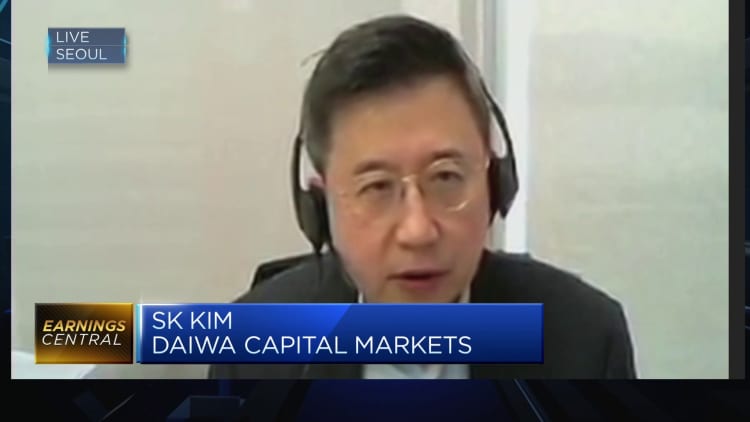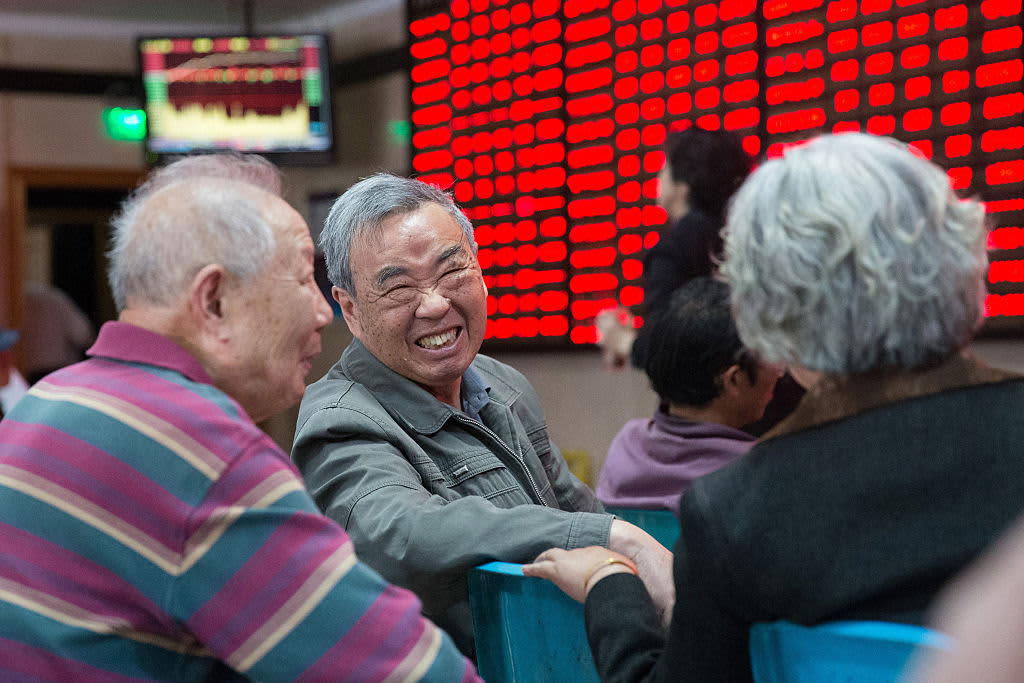[ad_1]
Attendees wait in line beneath a large LED display of smart connected home products to enter the Samsung Electronics booth, during the Consumer Electronics Show (CES) in Las Vegas, Nevada, on January 6, 2023.
Patrick T. Fallon | AFP | Getty Images
Shares of semiconductors in Asia fell as South Korean chip giant Samsung Electronics saw its worst profit decline since the third quarter of 2014.
Its fourth quarter operating profit fell to 4.31 trillion won ($3.4 billion) — a 69% drop from the same period a year ago, when it raked in 13.87 trillion won.
Operating profit for the final three months of 2022 was the lowest since the quarter that ended in September 2014, when it recorded 4 trillion won.
This comes as global smartphone shipments plunged to a low not seen since 2013, marking the largest ever decline.
Stocks of chipmakers in Asia saw losses as Samsung announced it will continue capital expenditure in the upcoming year, in which it spent a total of 47.9 trillion won for semiconductors in 2022.
The company was widely expected to pull back on further spending as global demand worsened.
Shares of Samsung Electronics fell by 3.6% in Seoul’s trading session on Tuesday. Rivals like SK Hynix also fell more than 2%, while Taiwan Semiconductor Manufacturing Company also fell 3.9% in Asia trade.
Japanese chipmakers Tokyo Electron fell 1.14%, Renesas Electronics shed 0.97% while Advantest fell 1.7%. Lasertec also fell 2.07%.
“Without some meaningful adjustment in production, I think it’ll be difficult to match the current mismatch in supply and demand,” SK Kim of Daiwa Capital Markets told CNBC’s “Street Signs Asia.”
U.S. semiconductor maker Micron announced last month it will cut its headcount by 10% in 2023 cut its capital expenditures, which Kim described as “not enough.”
“We expect Samsung and other major memory makers [to] cut their production by at least 20%, that’s something we anticipated from [the] end of this quarter over the second quarter,” Kim said.
Despite worsening economic conditions, Samsung Electronics said it expects demand to recover later this year.
Semiconductors power everything from smartphones to electric vehicles. We think the sector’s battered stocks look primed for recovery.
“For 2023, while the macroeconomic uncertainties are expected to persist, the Company anticipates demand to begin recovering in the second half,” it said in a press release.
“The semiconductor business will continue to reinforce market and technology leadership and expand the proportion of advanced nodes and products.”
‘Primed for recovery’
JPMorgan Private Bank said the semiconductor industry provides an attractive entry point for investors as chip stocks saw steep declines in 2022.
“Looking at price moves, earnings expectations and [price-to-earnings] multiples, the industry now seems close to a cyclical bottom,” its strategists Jacob Manoukian and Jonathan Linden said in a report released earlier this month, citing data from the World Semiconductor Trade Statistics.

“Semiconductors power everything from smartphones to electric vehicles. We think the sector’s battered stocks look primed for recovery,” they wrote.
Daniel Yoo of Yuanta Securities agreed it may be time to buy chip stocks.
“I think that it is an opportunity to buy, but the question [mark] is that whether or not a really significant turnaround happens in the second quarter or the third quarter,” he said on CNBC’s “Street Signs Asia.”
“We see that continuation of the significant increase in terms of the demand regarding data centers or various areas,” said Yoo. “Also there’s a possibility that the AI-related demand might be picking up going into this year.”
– CNBC’s Chery Kang contributed to this report.
[ad_2]


